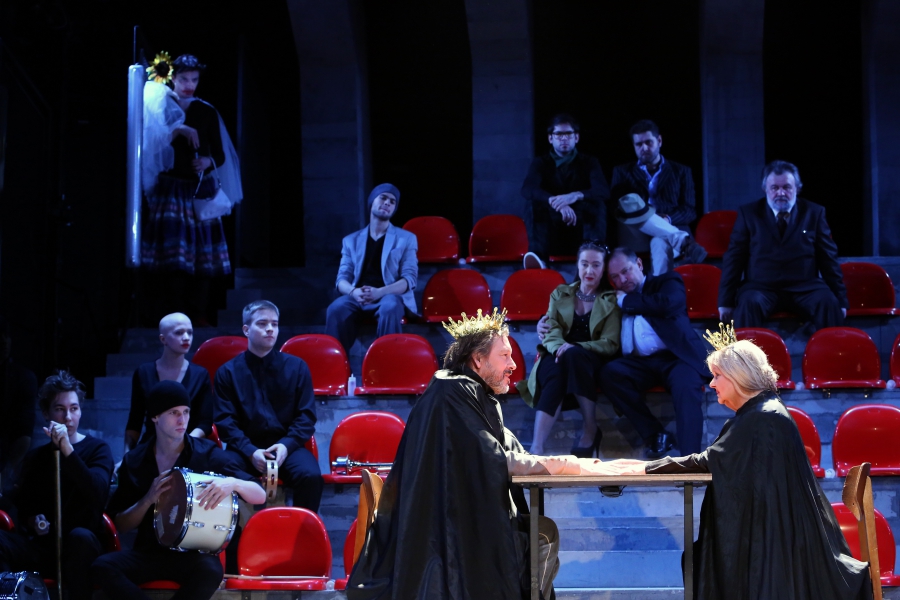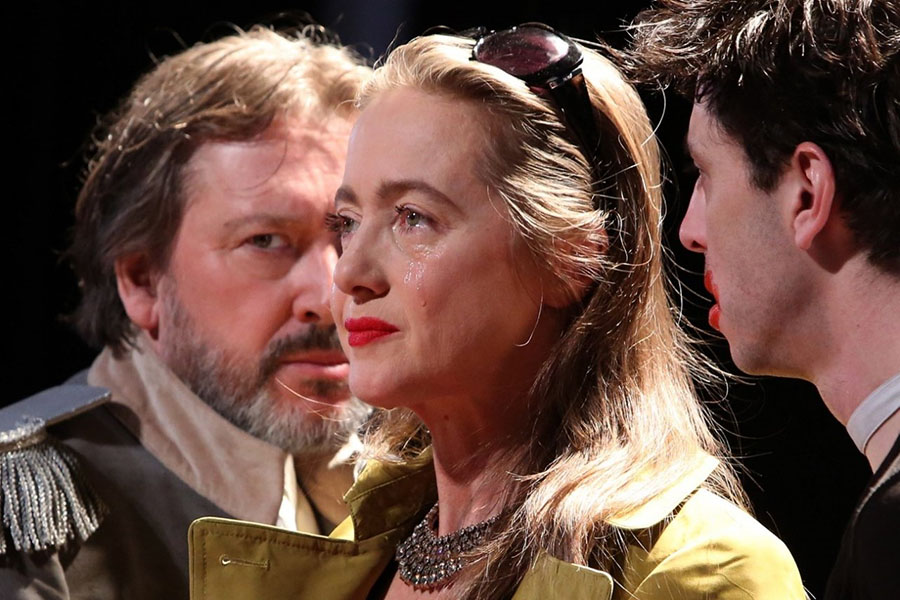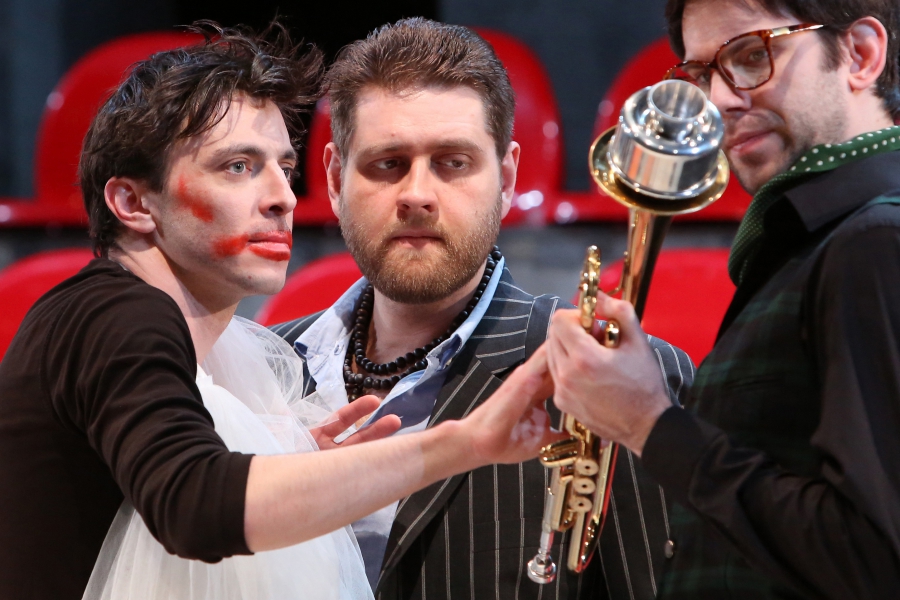A review of Örkény Theatre’s production of Shakespeare’s Hamlet (dir. Bagossy László) by Rónyai Kitty
Many may find the latest adaptation of Hamlet in Örkény Theatre quite unusual, for some it may even seem unrecognisable. Instead of a court we are beside a football pitch with a madly cheering crowd. The dresses and the props are all very modern and even the language is completely today’s language. We see camera phones and people taking selfies, so if someone expects to see “Shakespeare’s Hamlet” in the traditional sense, they might get the feeling of witnessing a tragedy in the wrong sense.

The court is watching the play requested by Hamlet. Hamlet, in the top left corner, is watching Claudius attentively.
Yet I strongly believe that the production had much to offer. One of the main ideas was that the actors interacted relatively little with one another. For most of their lines they faced the audience and often acted with their voices only. At first I thought that this might be a way to draw the audience in but the actors did not seem to look at us, rather they were avoiding each other’s eyes. The dishonesty that this trick suggests suits the play very well.
Polgár Csaba’s Hamlet is lively and heart-breaking at the same time. He handles the scenes of his madness with unfailing energy making many situations exceedingly funny. But his soliloquies are the real matter of interest. When he says: “Now I am alone” that is truly the first time when there is nobody else on stage. The soliloquy here starting “O, what a rogue and peasant slave am I!” is his most powerful one. He is obviously talking to the audience but in this particular production that effect is amplified by the clever use of lighting. Lights are actually turned on the audience making us even more aware of us being an audience. Polgár Csaba plays with a gun throughout the soliloquy which he even points at us, challenging us to call him a coward. The overall effect is extremely powerful.

Between the ghost of the old king and the desparate Hamlet, the queen neither moves, nor looks at her son.
Another great scene is when Gertrude and Hamlet talk together. Hamlet is rushing up and down the stage while Gertrude is just staring forward throughout. Gertrude’s immobility and the fact that she would not even look at her son created a beautiful tension, leaving the audience wishing that she would just turn to Hamlet instead of her new husband. Yet she does not or maybe she cannot.
The ending is also worth mentioning because instead of a fight and passionate deaths the audience is presented with a motionless retelling of what happened by Horatio. The actors speak in flat voices and just sit motionless, looking forward. An interesting choice and the reason could be the desire to omit or shift the climax and leave the audience without catharsis. I left the theatre somewhat unsatisfied and the feeling that this is not and should not be funny. Since then I heard people use expressions like “it killed it” or “it was dead” referring to the ending. This might be of no relevance but I thought it worthy to note that this is what people generally feel upon having watched a tragedy. The loss, the death, the murder and the dissatisfaction are all parts of the process so we might say that the ending did all it had to.
To finish I would just like to give a piece of advice to anyone who might watch this show. If you go full of expectation of a traditional production, you might just be very disappointed. Shakespearean does not equal traditional. It does not mean oldish looking costumes nor does it mean fancy old speech. Shakespeare’s truth is timeless, making it just as relevant today. So go with an open mind and pose questions instead of passing judgments and you are bound to have a good experience.
Read our other Hamlet reviews here, and all theatre reviews here!
Images taken from Örkény Theatre’s Hamlet gallery, photographed by Gordon Eszter.



